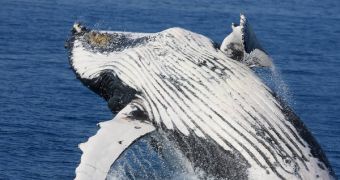Current efforts of saving the world's whales may be disregarding one of the most important aspects of the cetaceans' behavior, a new study seems to prove. Culture is an essential factor in understanding the way these large animals act, a growing idea in the international scientific community says. As an example, while most researchers look at whale species as a genetic diversity of the same ancestor, new evidence seems to prove that this may not be the case. Similar whale groups, with roughly the same genetic material, behave in very different ways, depending on the places they live in and the environment they share, a number of investigations has revealed.
“We have no idea what’s going on. As we mess up the world, it goes off in all kinds of weird directions. The more diversity that’s out there, both genetic and cultural, the more whales can deal with it,” Dalhousie University in Nova Scotia Biologist Hal Whitehead explains, quoted by Wired. According to the researcher, it may be that saving whale species as a whole may imply letting go of some cetacean cultures, but this is a risk we will have to deal with pretty soon. Nations such as Japan, South Korea and others are stubbornly refusing to let go of their destructive whaling habits, and cull the animals in unsustainable numbers each year.
Marine biologists who have spent a lot of time with whales say that the differences between the “dialects” the animals speak within the same group are striking. They give the example of killer whales (which are, in fact, dolphins), which speak various languages in order to get along, even when more pods inhabit the same region of the sea. The experts likened this occurrence to a human neighborhood, populated by two or more ethnically distinct groups.
However, despite the clear differences between same-species populations, some of the largest institutions in the world do not yet acknowledge them. For example, the International Whaling Commission (IWC), which, at least in theory, should care for the well-being of whales, still considers killer whales as a single species, despite having a precedent. In 2004, Canada acknowledged that two distinct types of dolphins existed off its eastern coast. The US admitted the same thing a year later.
“If I take all the sperm whales in the North Atlantic, can I consider them as one population? If I can, I can apply all kinds of theoretical results to it. But if there are factors that might break the population apart, that’s going to impact the way I can use the models to manage the populations. Once you realize that these sorts of things are going on, that has to be taken into account,” Postdoctoral Biologist Luke Rendell, from the University of St. Andrews, in Scotland, added.

 14 DAY TRIAL //
14 DAY TRIAL //